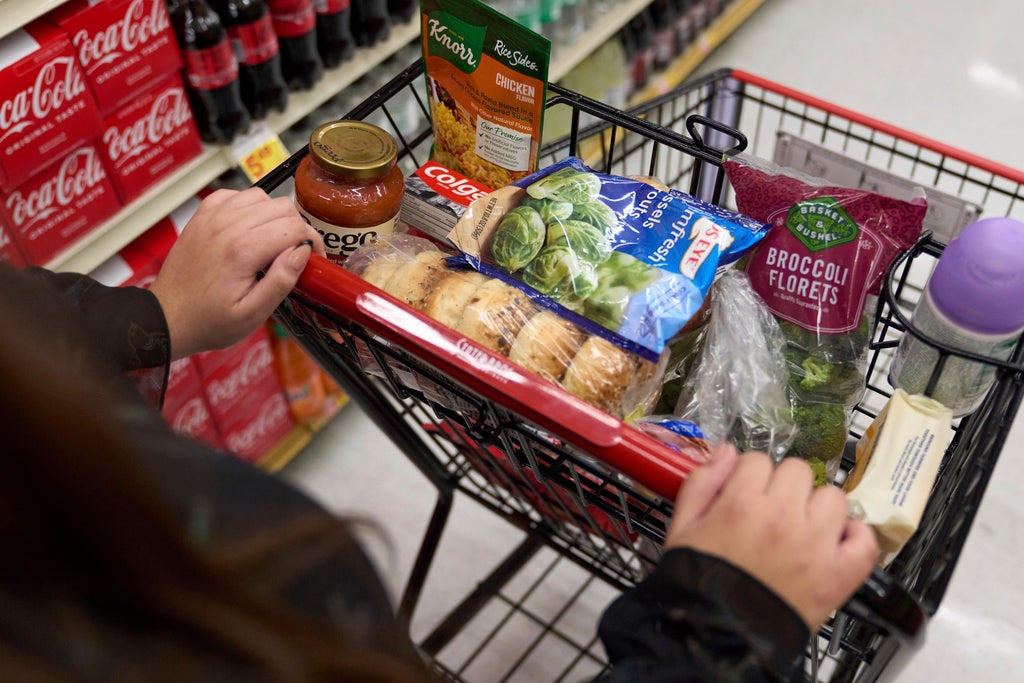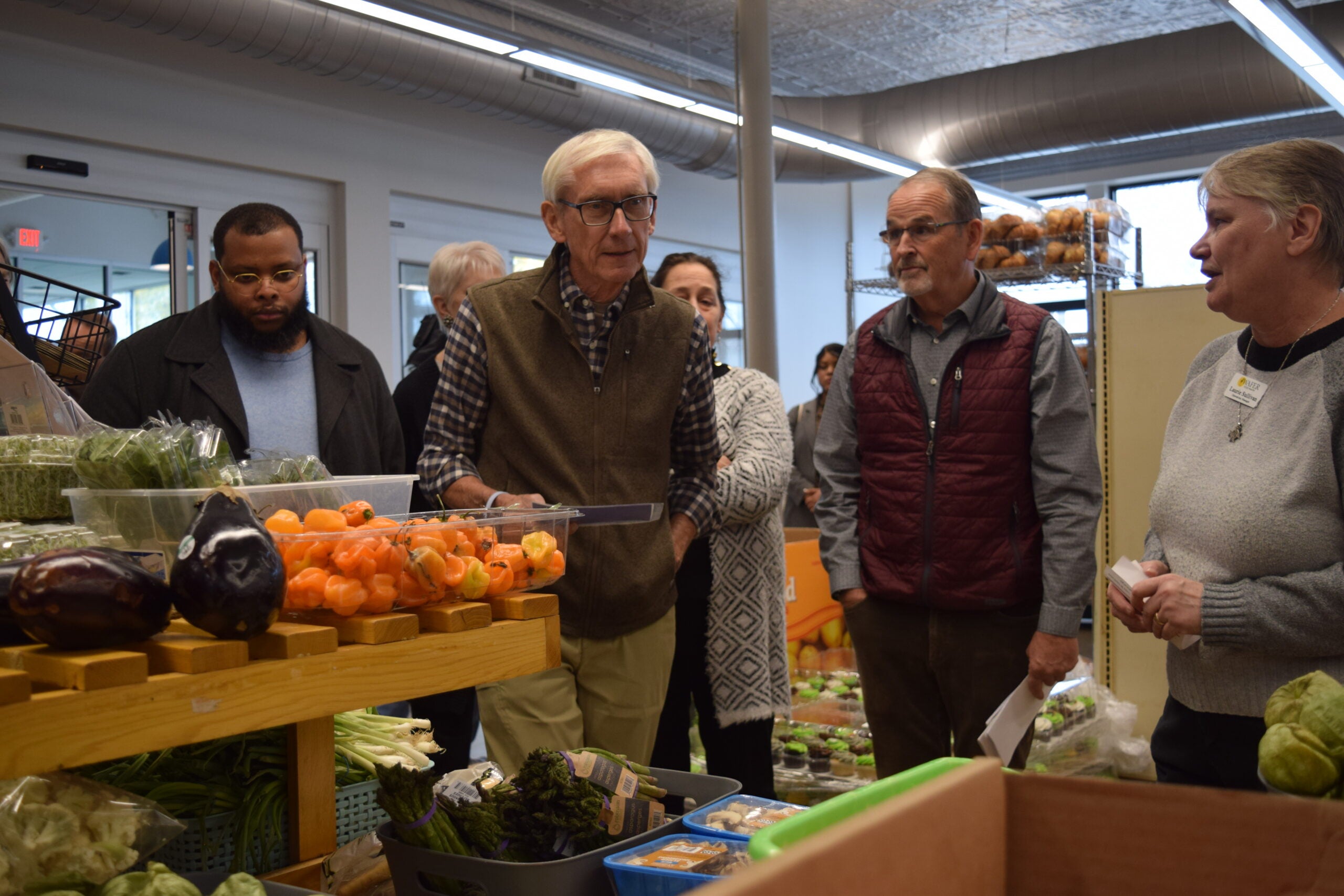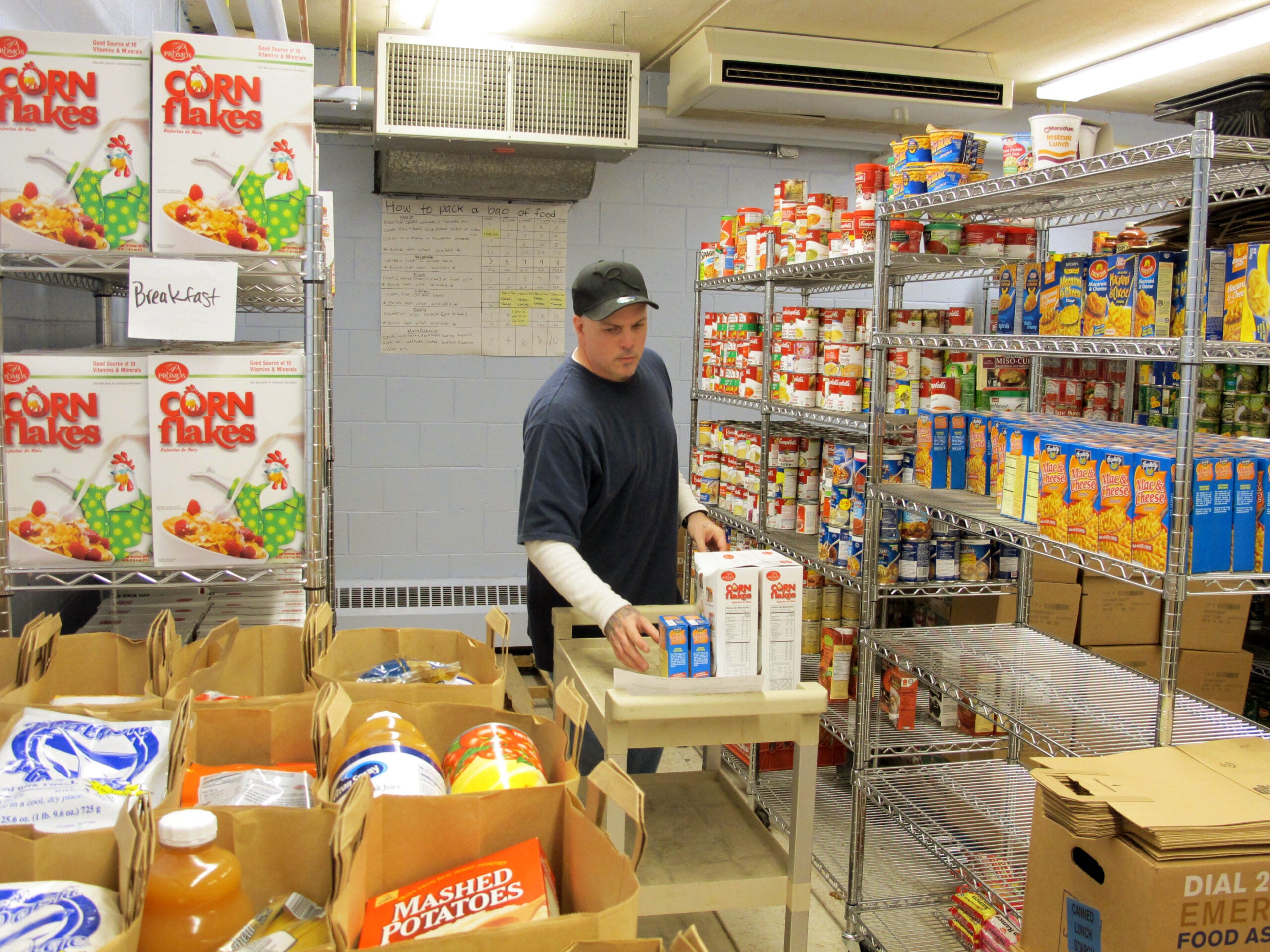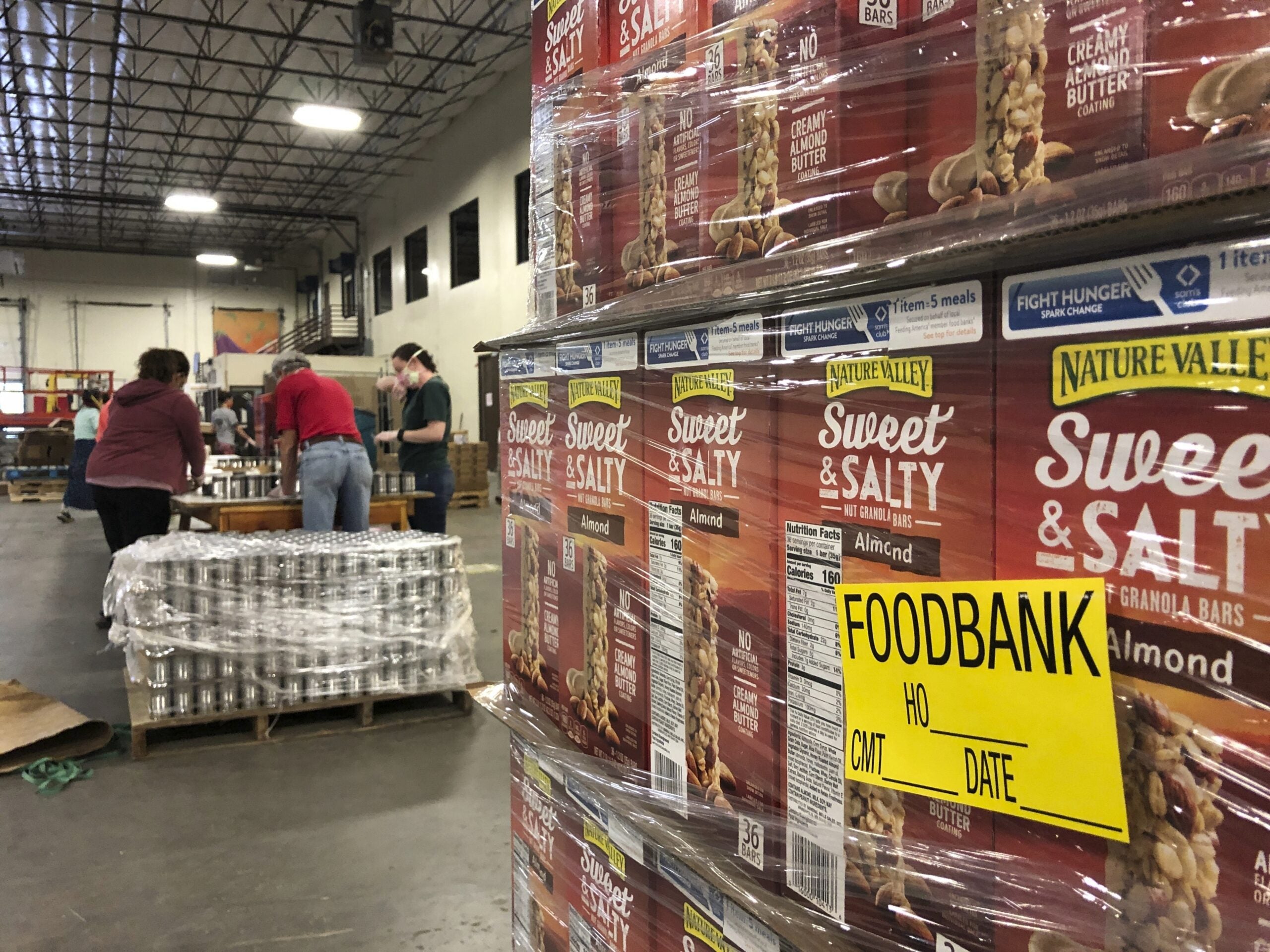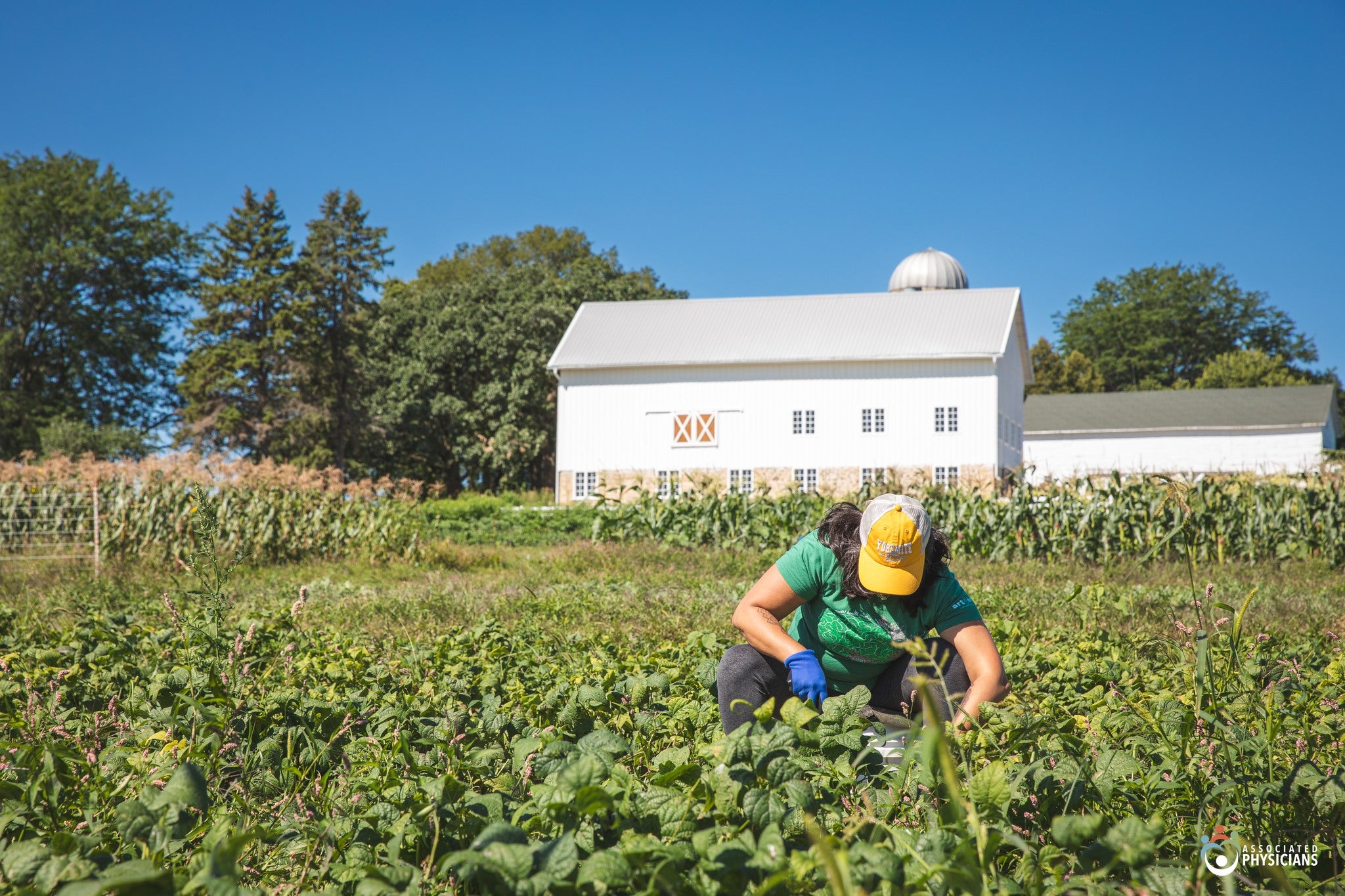The number of visits to many Dane County food pantries has more than doubled in the past two years, according to industry leaders. As food prices rise and COVID relief funds run out, pantries are asking individuals and public officials to help.
A coalition of 36 Dane County food pantries released a letter to the community on Tuesday, highlighting the need for short and long-term solutions.
The letter, published as an ad in the Wisconsin State Journal, said the need will increase as students have less access to free food with schools out for the summer.
News with a little more humanity
WPR’s “Wisconsin Today” newsletter keeps you connected to the state you love without feeling overwhelmed. No paywall. No agenda. No corporate filter.
“Food pantries have worked hard to stretch our resources, space, and teams as far as possible,” Julie Bennett, CEO and executive director of the Society of St. Vincent de Paul-Madison, said at a press conference following the publishing of the letter.
According to the Wisconsin Food Security Project almost 20 percent of children in the state lived in food insecure households in 2019. The disparity in food insecurity between Black and white households in Wisconsin is among the largest in the country. Between 2015 and 2019, 7.4 percent of white households in Wisconsin were food insecure, compared to nearly 33 percent of Black households.
The federal government ended extra FoodShare benefits last year and as other federal pandemic aid programs expired, many Wisconsin households struggled to make ends meet. That pushed food pantries around the state to the brink and some are still feeling the effects.
Dane County is the fastest growing county in Wisconsin and pantry coordinators are worried increases in demand will continue.

Pantries are asked to do more with less
Ellen Carlson, executive director of WayForward Resources, said her pantry has seen a 300 percent increase in demand over the last two years. She said when people see an increase in their rent, they are left with less money for groceries.
“They don’t want to have to make decisions about who in their family they’re going to feed. Whether they’re going to pay their rent or not,” Carlson said.
Mark Thompson, a board member of Sun Prairie Food Pantry at Sunshine Place, said pantries are spending more money on food than ever before. Organizers report buying food in bulk is more expensive and suppliers of free food for pantries can’t keep up with the demand.
“The options we have to keep our shelves stocked continue to shift and we’re more limited than we were just a few years ago,” Thompson said.
Food pantry leaders urged people to organize food drives, volunteer their time and spread the word on social media. People looking for food assistance can call 211 to be connected to a local food pantry.
Francesca Frisque, assistant director of Fritz Food Pantry at the Goodman Community Center, urged elected officials to come up with long-term solutions.
“We know there’s no quick or easy fix to food insecurity and the structural and economic factors that drive it,” Frisque said.
Wisconsin will drop ID checks at federally-funded foot pantries, expanding access. But a plan to give grants to hunger relief organizations failed to pass the state Senate in April.
“With access to food, kids can learn. Families can work and seniors can stay healthy,” Frisque said.
Wisconsin Public Radio, © Copyright 2025, Board of Regents of the University of Wisconsin System and Wisconsin Educational Communications Board.

